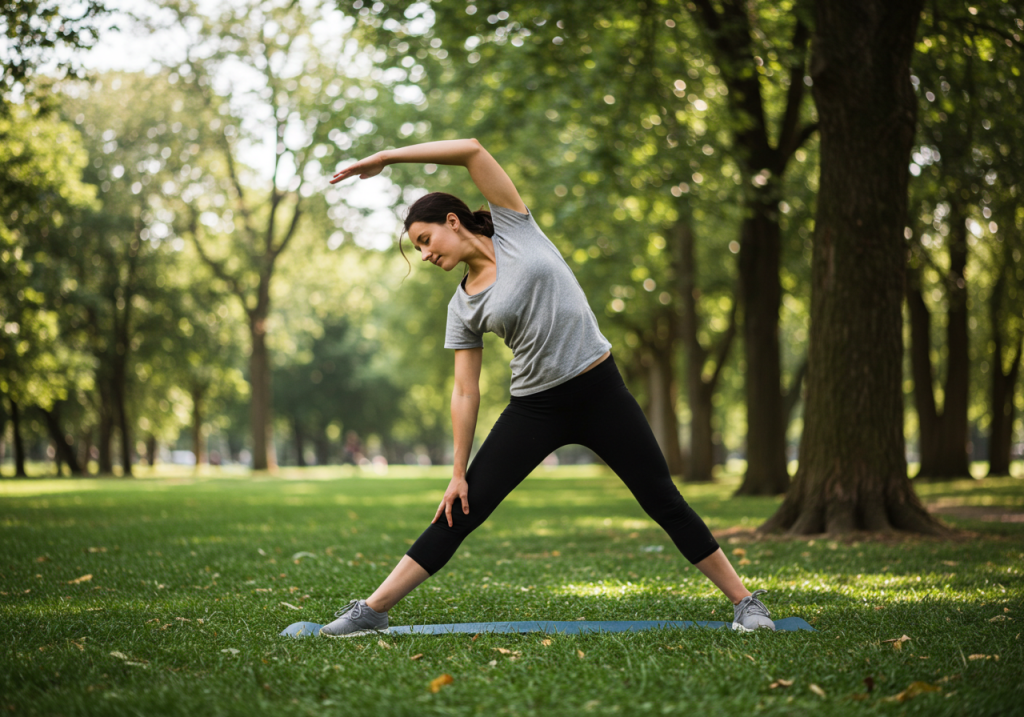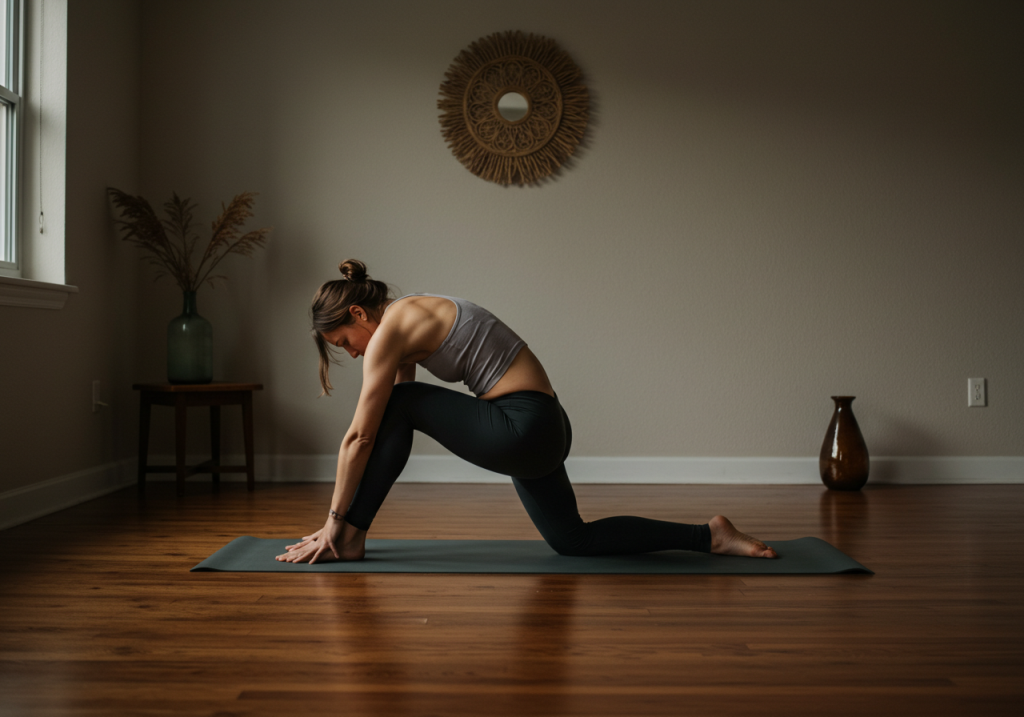How to Exercise with Chronic Pain?

First off, think about starting small. Picture a stubborn flower that pushes through cracked concrete—every bit of progress counts when you’re figuring out how to exercise with chronic pain. Gentle movements, such as stretching or yoga, can help ease tension without overwhelming your body. Try to listen to your body like it’s whispering secrets. If you feel any discomfort, don’t be afraid to back off a bit.
Next, let’s talk about consistency. Ever hear the saying, “slow and steady wins the race”? Well, applying this to how to exercise with chronic pain may help you build strength without exacerbating your pain. Commit to short sessions—just 5 or 10 minutes a day, to begin with. Gradually increase the time as your body adjusts, almost like filling a cup with water; you wouldn’t want it to overflow!
Consider incorporating low-impact activities that feel more like a gentle hug than a workout—water aerobics, walking, or tai chi are fantastic options for how to exercise with chronic pain. Ever walk through a garden and enjoy the serenity? That’s what these gentle exercises can bring to your life—peace and a sense of freedom.
Finally, don’t underestimate the power of community. Joining a support group, either in-person or online, can provide you with encouragement and tips from those who truly understand your journey. Sharing experiences is like lighting a candle in a dark room; it brightens your path and brings warmth to the struggle of how to exercise with chronic pain.

Breaking Barriers: How to Exercise with Chronic Pain for Long-Term Relief
One of the most effective approaches for how to exercise with chronic pain is starting slow—think of it like dipping your toes into a pool rather than diving in headfirst. Gentle activities such as walking or stretching can work wonders. It’s about tuning into your body, listening to what it needs, and adjusting accordingly. Have you ever tried yoga? It’s like giving your body a gentle hug while gradually increasing flexibility and strength. Plus, those deep breathing techniques can let you release some of that pent-up tension.
Another strategy for how to exercise with chronic pain is to incorporate low-impact workouts, such as swimming or cycling. These activities are the superheroes of the exercise world; they provide great cardiovascular benefits without putting too much strain on your joints. Picture yourself gliding through the water or cycling down a scenic path—sounds inviting, right?
Consistency is key. Just like watering a plant day by day, small, regular workouts can lead to significant growth and improvement over time. Setting realistic goals is vital too. Instead of aiming for an hour at the gym, start with 10 or 15 minutes—celebrate those small victories! They add up, and before you know it, you’re creating a routine that feels natural. This is how to exercise with chronic pain—by taking small steps that lead to big improvements.
Tailored Workouts: How to Exercise with Chronic Pain
Imagine your body as a delicate machine. When one part is rusty or needs a tune-up, you don’t just park it in the garage and walk away, right? So why should your body be any different? With customized workouts, you can make gentle adjustments to keep everything running smoothly. Think of these workouts as a personal playlist—specifically curated to help you figure out how to exercise with chronic pain in a way that feels good for you.
Gentle stretching, low-impact exercises, and even aquatic workouts can all be amazing for easing tension without making you feel like you’ve run a marathon. It’s about embracing your unique circumstances and finding what keeps you engaged without overstretching your limits. Ever tried taking a walk while listening to your favorite podcast? It’s that kind of enjoyable experience you’re aiming for when figuring out how to exercise with chronic pain—one that distracts you, lifts your spirits, and still keeps you on your feet.

Low-Impact Exercises: How to Exercise with Chronic Pain
Low-impact exercises are like that soothing balm for your body—think of them as a warm hug on a rough day. Activities like swimming, yoga, and cycling not only help to keep your joints moving without excessive strain but also promote a sense of well-being that can be hard to achieve when pain clouds your day. Have you ever felt the weight lift off your shoulders after a nice stretch? That’s because even simple movements can release endorphins, your body’s natural painkillers.
Plus, low-impact workouts are diverse, so you won’t get bored easily. You could try water aerobics, where the buoyancy of water supports your movements, making it perfect for easing aches. Or consider Pilates, which focuses on core strength and flexibility, helping you gain control over your body. Ever tried tai chi? It’s like dancing slowly in a meditative state, allowing your mind to calm while your body gains strength. These are all fantastic ways to learn how to exercise with chronic pain.
Empowerment through Movement: How to Safely Exercise with Chronic Pain
First off, let’s take a deep breath and remember: movement is essential. It’s like watering a plant—you need it to thrive. But before you jump into the world of exercise, it’s crucial to listen to your body. Think of it as tuning into your favorite radio station; sometimes, you’ve got to twist the dial to find the right frequency. Consider starting with low-impact activities like walking or swimming. These are gentle on your joints yet effective in boosting your mood and energy levels, which is a big part of learning how to exercise with chronic pain.
Ever heard the saying, “Slow and steady wins the race”? Well, it’s true! Take small steps—literally. Slowly build your routine, focusing on consistent, manageable sessions rather than pushing yourself too hard. Just imagine you’re sculpting a masterpiece; every small stroke counts toward the big picture of how to exercise with chronic pain.
Also, just like a car needs the right fuel to run smoothly, you require solid guidance. Consulting with a physical therapist can be invaluable. They’re like personal trainers for your pain, helping you find safe ways to move without triggering flare-ups. Finding a professional who understands how to exercise with chronic pain can make a world of difference.
From Pain to Performance: Success Stories of Exercising with Chronic Conditions
Take Sarah, for instance. She has fibromyalgia, a condition often accompanied by debilitating pain and fatigue. Instead of succumbing to her circumstances, Sarah decided to take control of how to exercise with chronic pain. She started with gentle yoga, merely stretching and breathing. Slowly but surely, she found strength she didn’t know she had. Now? She participates in marathons and has even inspired others to join her fitness journey. It’s amazing how a simple routine can shift your mindset from despair to determination.


Mind Over Matter: The Psychological Benefits of Exercising with Chronic Pain
When you hit the gym or even take a leisurely stroll around the block, your body releases endorphins—those magical feel-good hormones. It’s like nature’s own painkiller! Regular exercise not only boosts your mood but also helps to decrease the perception of pain. Think about it: when you focus on a workout, your mind shifts away from the discomfort. Suddenly, that troublesome sensation fades into the background, like a faint echo.
You might be wondering, “How can I exercise when I can hardly get out of bed?” Great question! It doesn’t have to be an intense, sweat-dripping workout. Gentle activities like stretching, yoga, or swimming can work wonders. Picture this: your body in motion, working in harmony with your mind, creating a powerful alliance that fights back against pain. It’s all about finding what feels good for you, starting slow and building up as you go. This is exactly what it means to discover how to exercise with chronic pain.

Moreover, the sense of accomplishment that comes from sticking to a routine can boost your confidence. Every little victory—be it an extra minute of stretching or a few more steps—feels like a triumph. It’s akin to climbing a mountain and reaching the summit, where the view is all about feeling proud of yourself. So, lace-up those sneakers and embrace the power of movement. Your mind, body, and spirit will thank you as you discover how to exercise with chronic pain.




